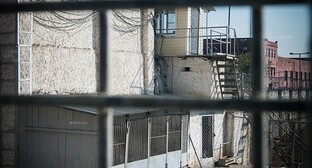24 April 2003, 23:24
Temryuk
Rayon (sector) centre in Krasnodar kray (region), 193 km west of Krasnodar. Located on the northern coast of the Taman Peninsula, on the right bank of the Kuban River, not far from its flowing into the Sea of Azov. A seaport (4 km from the city). Temryuk is connected to the Crimean - Caucasus line with a railway branch (14 km). Population (1992 est.) 33.8 thousand, (1897 est.) 14.5 thousand, (1926 est.) 15.9 thousand, (1939 est.) 23.2 thousand; (1959 est.) 23 thousand, (1979 est.) 31.9 thousand.
In 1237, the Tartars seized the Kuban steppe and built a town at the site of present Temryuk. In the 14th century, there was a Genoa colony of Kopa here. At the end of the 15th and beginning of the 16th centuries, during Turkish-Tartar dominion, the city was referred to as Tumnev. The name of Temryuk seems to be given after the Kabardian Prince Temryuk Aydarovich (Idarovich), who drove the Tartars away from the Taman Peninsula in alliance with Russian troops and built the fortress of Novy Temryuk here. In 1570, after the Russian troops left the city, the Turks and the Tartars re-established their supremacy, forced the fortress and gave it the name of Adis. In the 17th-18th centuries, a constituent of Turkey; since 1774, a constituent of Russia. In 1778, the Starotemryukskoye Fortification was erected. Since 1793, a Cossack Temryuk tract. Since 1821, a borough; since 1831, a Cossack kuren (quarters of a Cossack military unit); since 1843, a stanitsa (Cossack village). Since 1860, a town of Temryuk. In 1860-1910, an uyezd (canton) centre of Kuban oblast (province). At the end of the 19th century, Temryuk had more than 15 thousand people living there, 2 Orthodox churches, a Jewish Synagogue; a municipal college, a female school, a primary vocational school, a male parish school, etc. The city had a municipal public bank, a printing house, a port, a customs post, an army therapeutic mud bath; 60 factories, plants and workshops, including 21 brickworks, 18 mills, etc. The inhabitants were engaged in fishery. The main export was grain.
Present Temryuk is the centre of fishery and fish industry (a fish cannery, a sturgeon farm); the city processes agricultural raw materials (a milk-processing factory, a bakery). At the beginning of the 1990s, the city had a pilot machine plant, a factory of building materials, a clothes factory, a beast-breeding farm.
Temryuk has a Museum of History and Archeology and a Voyennaya Gorka Weaponry Museum.
Since 1860, the city was mainly built up with one-storeyed houses under the regular plan with a gridiron pattern of streets. The city outskirts of Soldatskaya, Pesky, Zamostyansky settlement adjoined the central part of the city. Nowadays, the high street and the slopes of the Misky Mount have been built up with 5-storeyed residential houses.




